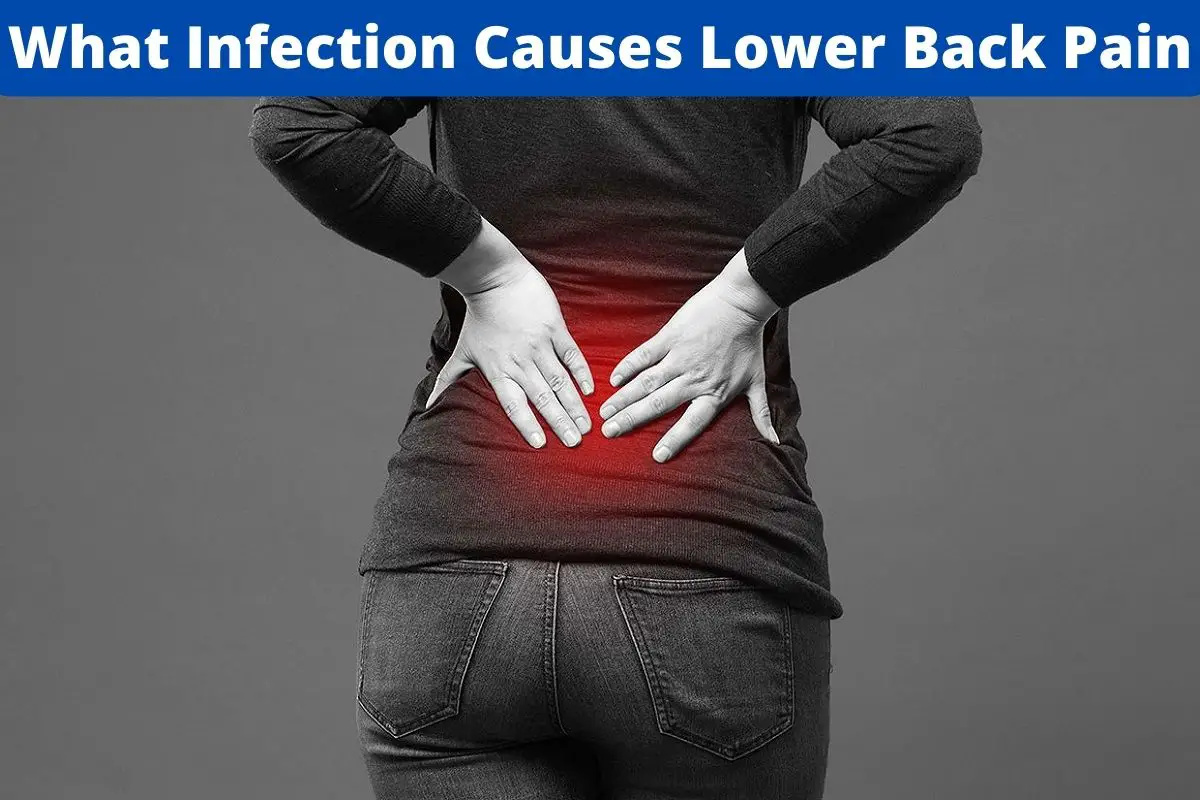What Infection Causes Lower Back Pain?

Infections are often the root cause of back pain and can spread to the spine through the blood leading to severe medical conditions. But can bladder and, say, What Infection Causes Lower Back Pain? Learn about the eight most common infections that cause back pain from here.
When you have back pain, it’s important to identify the source of the problem so that your doctor can determine the best treatment. The Lumbar spine (lower back) is a complex structure containing bones, joints, ligaments, tendons, muscles, and nerves, so there are many ways in which things can go wrong and cause back pain. Bacterial infections are among the more common causes of back pain – either from disease or medical procedures.
That said, other types of infections may generate from any area of the body causing pain in the lower back. Keep reading to know about the most common infections that can cause lower back pain.
The 8 Types of Infections That Can Cause Back Pain
These are the common types of infections that may lead to spinal infection, causing pain in the lower back.
1. Bacterial Infections
You may be wondering if bacterial infections can cause back pain. However, four common bacterial infections are known to cause pain throughout the body, including the lower back. These are the following:
2. Staphylococcal Infection
Staphylococcus Aureus is a bacterium responsible for most spinal cord infections causing pain in the lower back. This bacterium can be contracted by touching an infected person or by sharing items with an infected person, such as towels and sheets. The bacteria can then enter spread through your bloodstream, causing the Staph infection.
3. Lyme Disease
Lyme disease is a bacterial infection transmitted by tick bites, resulting in the appearance of a circular rash on the skin. The disease can also cause pain throughout the body, including pain throughout the body (especially back pain).
4. Brucellosis, Syphilis, And Yaws
These are all bacterial infections caused by different types of bacteria. Both chronic and acute lower back pain are considered symptoms of spinal spondylitis caused by the bacteria Brucella.
5. Discitis
Discitis, a bacterial infection of the intervertebral disc, can occur as a primary or secondary condition. It is characterized by pain and movement-related symptoms such as fever and stiffness. Some reports suggested that driving a lawnmower may predispose to bacterial infections and lumbar discitis.
6. Spinal Canal Infection
Spinal canal infection or vertebral osteomyelitis is a rare yet very deadly cause of spinal back pain. The symptoms of spinal canal infection start with fever and severe back pain that radiates from the spinal column. A person suffering from this condition faces difficulty when walking and feels weak when moving muscles. It generally lasts 4-6 weeks but, if left untreated, can lead to nerve root pain and severe illnesses like bowel/bladder dysfunction.
7. Disc Space Infections
The lumbar spine or lower back comprises of 5 bony segments called vertebrae sitting one on top of the other and separated by shock-absorbing cushions known as discs. The discs are dual purposes and are located between your vertebrae.
Spine infections that stem from a problem with the intervertebral disc—a gel-like cushion between your vertebrae—can occur naturally and after spine surgery. The infection may cause swelling of the soft tissues and the appearance of pus-like material. This condition can be more painful when you move.
8. Pyogenic Spinal Infection
Pyogenic spinal infection, also known as Pyogenic vertebral osteomyelitis and spinal cord abscess, is a rare type of infection that occurs in the spinal cord. Untreated, this infection can cause inflammation of the spinal cord, leading to severe spinal dysfunction, back pain, and fevers.
9. Epidural Abscess
Spinal epidural abscess, which occurs in the lower back, is a condition that is caused due to an infection in the space around your spinal cord (the spinal canal, or epidural space). Epidural abscess causes fluid and inflammatory cells to accumulate. Symptoms range from mild to severe, including spine tenderness and back pain.
10. Bladder Infection
Bladder infections can spread to the kidneys, causing mid-back pain. This back pain is referred from the bladder and will persist regardless of position or activity.
11. Urinary Tract Infection (UTI), Pyelonephritis and Kidney Infection
Pyelonephritis or kidney infection can cause back pain. It is a type of urinary tract infection (UTI). UTIs are urinary tract infections that often disperse to the kidneys and the bladder. Due to bacteria going into your urinary tract and infecting your body’s organs, pyelonephritis can cause pain deep in your abdomen or possibly in the lower back. Different conditions may also cause this symptom, begging for prompt medical help. The different causes of back pain from kidney infection may include UTI, hemorrhoids, hernia, and lumbar nerve root compression.
12. Pelvic Infection
Pelvic inflammatory disease (PID) can cause excruciating back pain. This infection is associated with a woman’s reproductive organs and often causes severe pain in the lower back. This infection can spread from the vagina to the uterus and fallopian tubes, causing severe lower back pain at times.
Conclusion
Back pain is a common complaint and can be caused by many things, with infection usually being towards the lower end of the probability spectrum. And while infection can certainly cause intense back pain and muscle stiffness, any particular infection will rarely produce lower back pain alone (although after an episode of acute UTI or kidney stones, it’s possible).
Most physicians would immediately consider an infection (spondylitis, epididymitis, prostatitis, etc.) if symptoms of lower back pain are associated with a genitourinary and gastrointestinal condition. They would also probably think of viral and bacterial infections such as hepatitis and syphilis. But fortunately, recent breakthroughs in medicine are making it possible for both doctors and patients to fight against all these infections.
Yet, many patients tend to forget about their initial symptoms. So if you have lower back pain that radiates down the legs, you might want to pay attention to this infection before it’s too late, as this might be a symptom of a serious issue.
Sources
- Staphylococcal Infections | MedlinePlus (Accessed at https://medlineplus.gov/staphylococcalinfections.html)
- Ankylosing Spondylitis (AS): Symptoms, Causes & Treatment (Accessed at https://www.mayoclinic.org/diseases-conditions/ankylosing-spondylitis/symptoms-causes/syc-20354808 )
- Osteomyeltitis – Symptoms and Causes (Accessed at https://www.mayoclinic.org/diseases-conditions/osteomyelitis/symptoms-causes/syc-20375913)
- Normal Spine Anatomy. (Accessed at https://www.spine-health.com/conditions/spine-anatomy/normal-spinal-anatomy)





